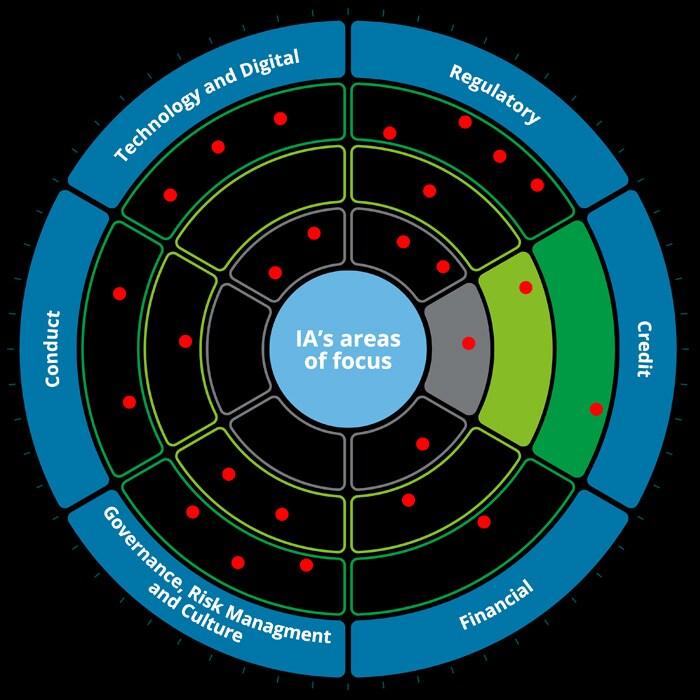In the intricate world of finance, where numbers dance with narratives and risk is both a shadow and a spotlight, the credit risk audit emerges as a pivotal performance. It’s a meticulous examination that can make or break the symphony of a company’s financial health. As businesses navigate the complex corridors of credit management, preparing for a credit risk audit becomes not just a necessity, but an art form. This article serves as your maestro, guiding you through the essential steps to orchestrate a seamless audit experience. With an authoritative baton, we will explore the strategies, tools, and insights needed to ensure your organization stands ready to face the scrutiny of a credit risk audit, transforming potential pitfalls into stepping stones for financial fortitude. Whether you’re a seasoned financial officer or a burgeoning analyst, this guide will equip you with the knowledge to conduct your audit preparation with confidence and precision.
Understanding the Scope and Objectives of a Credit Risk Audit
In the realm of financial management, a credit risk audit is a meticulous examination designed to assess the potential for financial loss due to a borrower’s failure to meet their obligations. The primary objective of this audit is to evaluate the effectiveness of the credit risk management processes and ensure compliance with regulatory standards. Auditors delve into the organization’s credit policies, scrutinizing everything from the initial credit assessment to ongoing monitoring and recovery strategies. This thorough review not only identifies potential vulnerabilities but also offers insights into enhancing risk mitigation techniques.
Understanding the scope of a credit risk audit involves recognizing the breadth of areas it covers. Key elements typically include:
- Credit Approval Processes: Ensuring that credit decisions are made based on robust criteria and sound judgment.
- Portfolio Management: Evaluating the diversification and concentration risks within the credit portfolio.
- Risk Measurement Tools: Assessing the accuracy and reliability of models used to predict credit risk.
- Compliance and Regulatory Adherence: Verifying that the organization meets all legal and regulatory requirements.
By thoroughly understanding these components, organizations can better prepare for the audit process, ensuring that they not only meet the required standards but also enhance their overall credit risk management framework.

Key Documentation and Data Preparation Strategies
In the realm of credit risk audits, having robust documentation and well-prepared data is paramount. Begin by ensuring that all relevant documents are meticulously organized and easily accessible. This includes credit policies, loan agreements, and risk assessment reports. Each document should be current and accurately reflect the organization’s credit risk management framework. Implementing a centralized digital repository can significantly enhance the efficiency of retrieving these documents during an audit.
Data preparation is equally critical. Focus on ensuring that your data is complete, accurate, and consistent. Employ data validation techniques to identify and rectify any discrepancies. Consider the use of data visualization tools to present complex data sets in a more digestible format, facilitating a clearer understanding for auditors. Furthermore, maintaining a detailed data dictionary can provide clarity on data sources and definitions, which is invaluable during an audit. By adhering to these strategies, you not only streamline the audit process but also reinforce the integrity of your credit risk management practices.

Effective Communication with Auditors for a Seamless Process
When engaging with auditors, clarity and transparency are paramount. Begin by establishing a clear line of communication to ensure all parties are aligned on expectations and objectives. Consider the following strategies to foster an effective dialogue:
- Designate a Point of Contact: Assign a dedicated team member to liaise with the auditors, ensuring consistent and streamlined communication.
- Prepare Thorough Documentation: Provide comprehensive and well-organized documentation that anticipates potential auditor queries, demonstrating preparedness and attention to detail.
- Embrace Open Dialogue: Encourage open discussions to clarify any ambiguities and address concerns promptly, fostering a collaborative rather than adversarial relationship.
By adhering to these practices, you not only facilitate a smoother audit process but also build a foundation of trust and mutual respect with your auditors, ultimately leading to more insightful and constructive outcomes.

Leveraging Technology to Enhance Audit Readiness
In today’s digital age, technology plays a pivotal role in streamlining the audit process, making it more efficient and comprehensive. Embracing cutting-edge tools can significantly enhance your organization’s audit readiness, particularly in the realm of credit risk. Here are some key strategies to consider:
- Automated Data Collection: Utilize software solutions that automatically gather and organize financial data. This reduces manual errors and ensures that all necessary information is readily available for auditors.
- Real-Time Monitoring: Implement systems that provide real-time insights into credit risk metrics. This allows for proactive adjustments and ensures that your organization is always prepared for an audit.
- Cloud-Based Solutions: Leverage cloud technology to store and manage audit-related documents. This not only facilitates easy access and sharing but also enhances security and compliance with regulatory standards.
By integrating these technological advancements, organizations can not only improve their audit readiness but also foster a culture of transparency and accountability. This approach not only satisfies auditors but also builds trust with stakeholders, reinforcing the organization’s commitment to sound financial practices.





